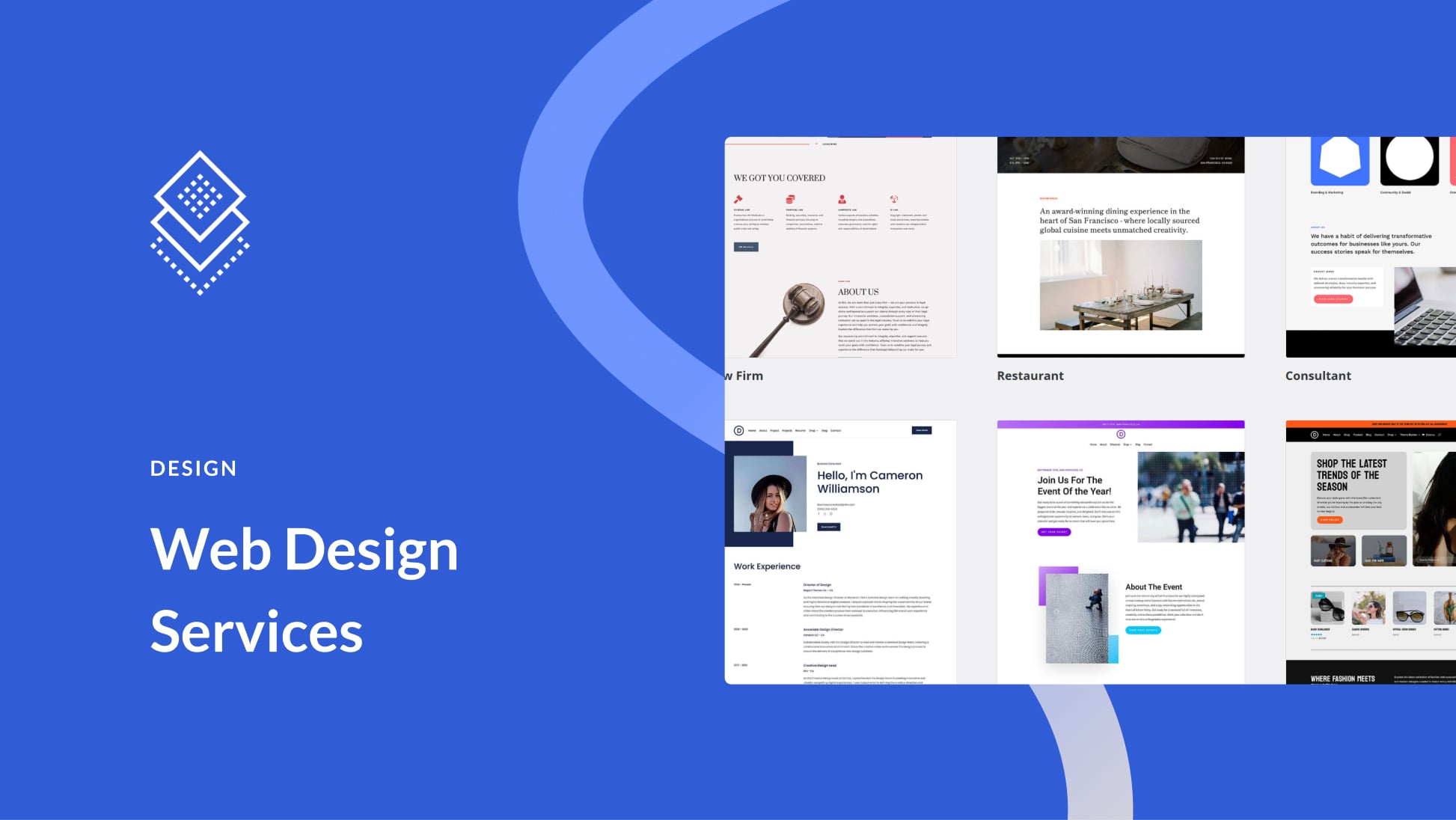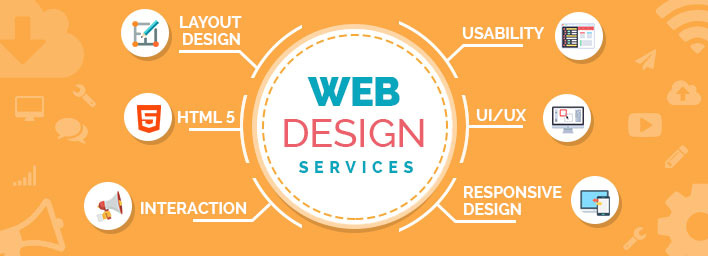How a Website Company can help your business through innovative website design solutions.
Learn Just How Website Design Works to Produce Engaging Customer Experiences
Web style plays an important function fit customer experiences across electronic platforms. By understanding key concepts like usability and visual pecking order, developers can create websites that not just attract visitors yet additionally encourage them to engage. Efficient formats and well-balanced color pattern can substantially affect customer behavior. There are much deeper considerations that go beyond looks, which are important for promoting an inclusive online setting. What are these aspects that can change an easy internet site right into an engaging experience?
Recognizing the Concepts of Web Style
The foundation of efficient web style hinges on a set of core principles that direct the creation of engaging customer experiences. These principles consist of functionality, ease of access, and aesthetic pecking order, each playing a crucial duty in just how individuals connect with a site. Usability assures that individuals can browse with ease, finding info easily. Access broadens the reach of a web site, accommodating users with diverse requirements and capacities. Aesthetic pecking order directs customers' attention to crucial elements, assisting in simpler comprehension of web content. Furthermore, consistency in layout elements fosters knowledge, improving individual comfort. Color pattern and typography need to enhance the overall aesthetic while maintaining readability. Moreover, responsive design adapts to numerous devices, ensuring a seamless experience across platforms. By adhering to these principles, designers produce internet sites that not just captivate users yet also assist them towards preferred activities, inevitably enhancing engagement and contentment.
The Relevance of Layout in Customer Experience
Efficient layout functions as a backbone for user experience, affecting just how visitors engage and view with a site. A well-structured design overviews individuals' attention, making it much easier for them to navigate and discover appropriate details. By arranging content practically, designers can create a seamless flow that reduces cognitive load, enabling customers to concentrate on their tasks.

In addition, receptive layouts ensure that web sites operate well throughout various gadgets, keeping usability regardless of display size. Ultimately, a thoughtful layout is important in creating an interesting individual experience that fosters contentment, motivates exploration, and increases the chance of conversions. Focus to layout style is crucial for successful web communications and total user interaction.
Shade Schemes and Their Influence On Engagement
Exactly how do color pattern influence individual engagement on websites? Color pattern play an essential role fit individual assumption and actions. They stimulate feelings and can significantly influence just how individuals communicate with a site. For instance, warm shades like red and orange can promote interest and urgency, while cooler tones like blue and environment-friendly frequently share calmness and count on.
Furthermore, consistency in color usage promotes brand name recognition, making users most likely to involve with familiar visuals. Reliable shade comparison enhances readability, making certain users can conveniently browse material without stress. Additionally, the mental associations of shades can lead customers towards wanted actions, such as clicking a call-to-action switch.
Inevitably, an attentively picked color plan can not only attract customers however likewise boost their general experience, causing greater engagement rates and boosted contentment. For this reason, internet developers must very carefully take into consideration shade options to optimize individual communication and promote a favorable setting.
Navigation Best Practices for User-Friendly Internet Site
What makes navigating intuitive and user-friendly on a site? Efficient navigation relies upon clear structure and rational power structure. Customers should conveniently find food selections, commonly placed on top or side of the web page, enabling quick access to essential areas. Uniformity in layout aspects-- such as fonts, colors, and switch styles-- promotes knowledge, enhancing individual convenience. Detailed tags for navigation web links are important; they need to precisely stand for the web content customers can anticipate when clicked.
Furthermore, including a search feature can help users in discovering details info swiftly. Dropdown food selections can organize subcategories without frustrating visitors, while breadcrumb routes assistance users track their area within the site. Mobile optimization is also essential, as touch interfaces require larger switches and responsive designs. Inevitably, prioritizing simpleness and clarity in navigating enables customers to involve extra successfully with the web site, cultivating a positive customer experience.
Making sure Availability for All Customers
Making sure ease of access for all customers is essential in web style, as about 15% of the worldwide population lives with some form of disability. Web developers have to prioritize inclusivity by sticking to developed guidelines like the Internet Content Ease Of Access Standards (WCAG) These guidelines offer necessary requirements that boost functionality for people with aesthetic, acoustic, motor, and cognitive impairments.
Trick techniques include making use of detailed alt text for photos, guaranteeing sufficient shade comparison, and giving key-board navigability. Additionally, implementing screen reader compatibility can greatly improve the experience for aesthetically impaired individuals.
Checking sites with varied individual groups, including those with handicaps, can reveal possible obstacles and notify required changes. Informing design groups regarding accessibility can foster a society of inclusivity, eventually producing visit the website a more appealing and straightforward internet experience. By focusing on ease of access, designers not just broaden their audience however likewise show social obligation and dedication to equivalent accessibility for all.
Regularly Asked Concerns
What Tools Can I Make Use Of to Style My Website?
To design a site, one can make use of tools like Adobe XD, Figma, Lay Out, and WordPress. These systems use different attributes for design, prototyping, and material administration, helping with check my source the development of visually attractive and practical websites.
Exactly How Can I Test My Site's Individual Experience?
To test a web site's individual experience, one can use tools like Google Analytics for behavior tracking, conduct use testing with actual individuals, and gather feedback with surveys to recognize areas for enhancement and enhance overall involvement.
What Prevail Blunders in Internet Layout to Prevent?
Common errors in internet design include chaotic designs, bad navigation, absence of mobile optimization, slow-moving filling times, and making use of way too many typefaces or colors. These issues can hinder user experience and minimize total site performance.
Exactly how Commonly Should I Update My Internet site's Layout?
A website's design ought to be upgraded each to three years, or a lot more often if significant patterns arise or customer feedback shows frustration. Regular updates boost aesthetic her explanation appeals and functionality, making sure a engaging and fresh individual experience.
Can I Learn Website Design Without Coding Understanding?
Yes, one can find out website design without coding expertise. Numerous tools and systems enable individuals to create aesthetically appealing internet sites through drag-and-drop interfaces, allowing imagination without the complexities of shows languages.
